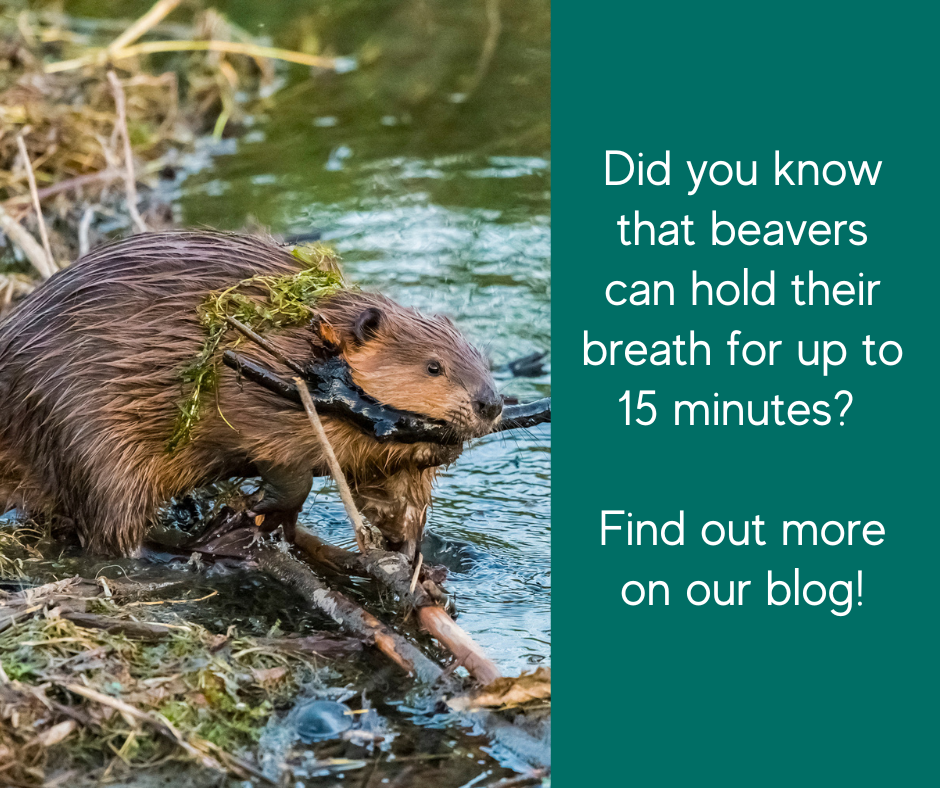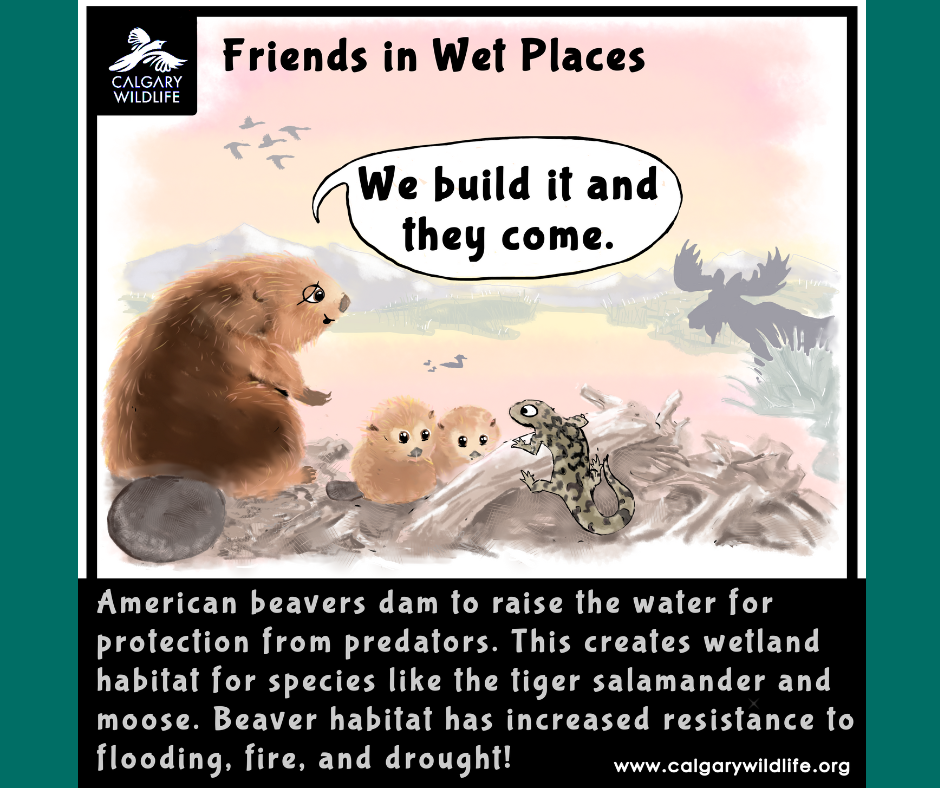April is Beaver Month
- Calgary Wildlife

- Mar 31, 2023
- 3 min read
Updated: Apr 24, 2023
April is Beaver month here at Calgary Wildlife.
Did you know that beavers can hold their breath for as long as 15 minutes? However, they typically remain underwater for no more than five or six minutes.

The species of beaver here in Alberta, is known as the North American beaver.
Unlike some of our other "animal of the month" species, there is only one species of beaver in Alberta and in Canada, with only one other in the whole world, the Eurasian beaver. But despite consisting of just one species in North America, our NA beaver ranges from up near the Arctic tundra all the way down to the Northern Mexico, these critters really get around.

Beavers are truly symbols of all things Canadian. Their scientific name (Castor canadensis) comes from a new Latin term meaning "of Canada", you can't get any more Canadian that that!
Join us all this month as we explore their amazing adaptations, impressive effects on our environment and more!
For our final post during BEAVER MONTH, let's talk about all of the amazing things that beavers do for our ecosystems!

Beavers are considered "ecosystem engineers", recognized for their ability to construct dams, raise water levels and create ponds that provide protection from predators. These ponds create wetland habitat for species like the tiger salamander and the mighty moose. And while some might consider beavers to be pests, they can actually help us manage water-related issues such as drought, flooding, and water pollution, as well as provide increased resistance to fire. Get the whole story on our blog at ...
Here’s a list of 5 ways beavers keep our ecosystems healthy and help manage water-related issues:

They create wetland habitat for other species:
Beavers create wetlands by constructing dams and creating ponds. This in turn creates habitat for other species including fish, mammals, waterfowl, songbirds, amphibians, and insects.
They increase biodiversity:
The influence of beavers and their activity is far reaching. Beaver activity can increase plant diversity by as much as 33%. As trees are removed and land is flooded, other plant species emerge in its place. These plants provide food and cover for new species. Riparian habitats (wetland areas near water) expand as wetlands are formed, and plants spread into the newly available habitat. This effect does not stop at plants, there is an increase in the diversity of all species including fish, invertebrates, and wildlife.
They improve water quality:
Beaver dams and pools reduce soil erosion and retain sediment, which absorb and filter pollutants such as heavy metals, pesticides, and fertilizers. This improves the quality of water downstream used by humans and other species.
They store water during droughts:
Beavers can help lessen the effects of drought because they cause water to be stored on the surface and absorbed into the sub-surface of the land due to the impoundment of water by their dams. This can increase stream flow during drought periods and make ecosystems less vulnerable during dry periods.
They minimize flood risk and mitigate flooding peaks:
Ironically, beavers help minimize flood risk the same way they minimize the effects of drought. Beaver dams help minimize flood risk by slowing the flow of water, which can delay and reduce flood peaks further downstream.
Next time you see a busy beaver swimming around or a mighty beaver dam, take a moment to appreciate the marvelous beavers and their handy work!



